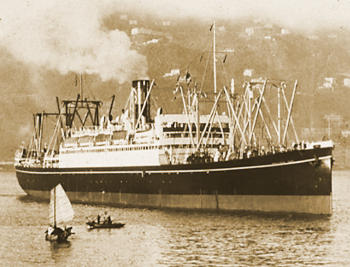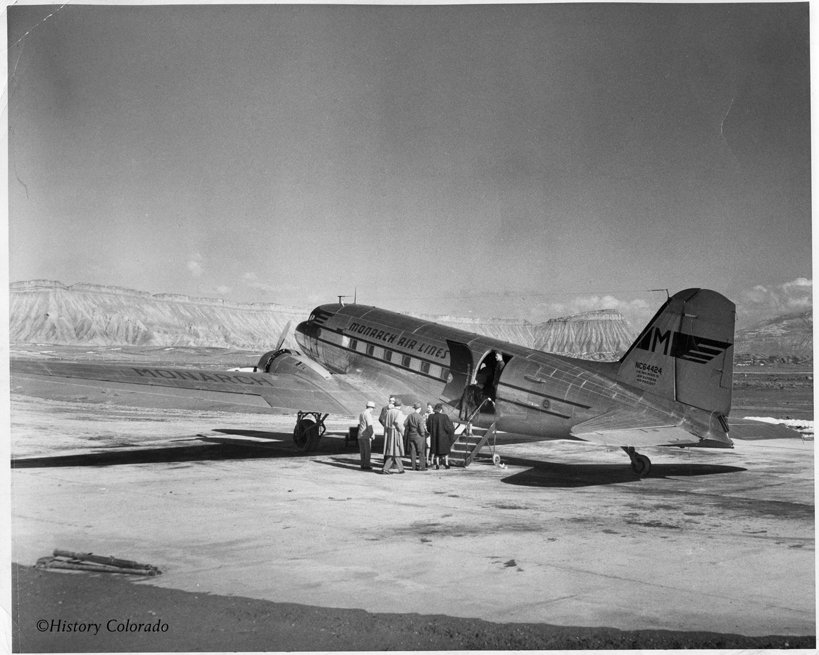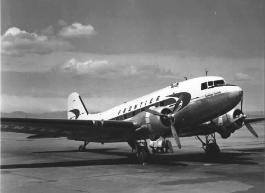I was born in Montrose, Colorado on March 3, 1920. The middle child of 3 sons of Fred W. Klatt, Sr. and Mary Lytle Klatt. I attended public school in Montrose through the 3rd grade, and in the depth of the Great Depression a decision was made to move to Durango, Colorado in pursuit of better job conditions. The family also spent a short period of time in Eureka, Colorado enroute to Durango.
I started Elementary school in Durango, progressed through Jr. High and High School and graduated from Durango High School in 1938. I entered Fort Lewis College outside Durango in Hesperus, Colorado and spent 1938 and 1939 at that college. I earned money for college by working at every job I could find, including hard rock mining. I met my future wife (Margaret Ann Rutledge) in the fall of 1940, and courted her until such time I was called into the Cadet Program of the Army Air Corps that I had signed up for in the spring of 1941.
19 Colorado boys were sent to Glendale, California in March to take Primary Training in Aviation as a Flying Cadet, a program under the auspices of CAL-AERO Institute of Flight. We had 60 hours of training time in the PT13. This led to the graduation and advancement to Basic Training at Ontario, CA in June of 1941, then on to the Advanced System in the Army Air Corps at Stockton, CA. I graduated in October of 1941. I experienced 201 hours in the Stearman, in the Vultee BT-13, and the AT-6. I graduated as a 2nd Lieutenant and under Army orders was sent to my first base at Manila, Philippines in the fall of 1941. 17 new Stockton trained 2nd Lts. joined 10 41-H grads from Sacramento, CA and we were to sail from San Francisco to the Philippines departing on Nov. 23, 1941.
This was on the USS Holbrook, and the 1st port of call was at Pearl Harbor, Honolulu, in the Hawaiian Islands on December 3 and 4. Also onboard the USS Holbrook were 3 other people Launder-Klatt-Beck-MacGillivray that also served in the 3rd Bombardment Group with me. We left on the 5th towards Manila, however after the Attack on Pearl Harbor on the 7th, we were sailing around in the middle of the Pacific when we received orders to change course from Manila to Australia. We arrived in Brisbane on December 22, 1941, 27 qualified and ready new pilots with nothing to fly!
We did various jobs around Brisbane, until finally assigned on January 13 to the 27th Bomb Group (who had evacuated from Manila and arrived in Australia sometime in January of ’42). The 27th trained the new arrivals in the A-24 dive bombers; I received 16 hours of time on that aircraft. The Army then split the group, ½ going North to Charters Towers with the 27th and the A-24s, and the other ½ staying in Brisbane where assigned to the 21st and 22nd Transport Squadron. The Transport Squad afforded me training on dual engine aircraft and in navigation techniques and twin engine flight experience. Our missions were to fly material, personnel and supplies all over the eastern coast of Australia, up to Darwin, and into the interior of Australia.
The 3rd Bomb Group was then organized at Charter Towers and 3 of us were transferred from the 22nd Transport to the new 89th Squadron within the 3rd Bomb Group. We joined the 89th on June 12, 1942, and at that time we received training on B-25s. Our earlier twin engine experience made this an easy transition, and then happily on to the A-20. We received full combat training at Charters Towers, consisting of bombing, strafing, formation flying, instrument work, single engine operations and we were well prepared to move into combat operations. I had a total of 20 hours of training on the A-20 when we left in a 12 aircraft formation from Charters Towers to Port Moresby on August 29, 1942.
My first combat mission was on Sept. 2, 1942, out of Port Moresby, bombing and strafing Mobutu which was located in the Owens-Stanley Range of mountains in the center of New Guinea. Our goal was to bomb and strafe the trails that the Japanese were using while advancing from the North after their invasion from the Islands (including the Philippines) enroute to (they hoped) Australia. From that first combat experience, our missions were to stop that advance and often we had missions to the Eastern coast of New Guinea (which would be Salamua, Lae and points in the middle where they had relayed their troops and supplies to go towards Port Moresby hoping to occupy and conquer that area. Amongst my missions flown during this period of time I was awarded a Silver Star on November 4, stemming from mission over Salamau bombing and strafing. On the 25th of September, 1942 I was advanced to a 1st Lieutenant.
My last combat mission was on May 2, ’43, to Lae, leaving me with a total of 39 combat missions, 37 completed missions and 2 aborted missions (one weather related, the other a hydraulic failure on the aircraft.) The records showed I had a total of 87 combat hours during the time at Port Moresby and on May 21, 1943 my orders came to return to the States. Five officers (Col. H Evanof, Capt. J. Hutchinson, Capt. J. Hill, Capt. E. Chudoba, Capt. F. Klatt) had similar orders to fly from Pt. Moresby to Honolulu, where we boarded another ship to sail back to San Francisco, so I travelled under the San Francisco bridge both leaving and returning from combat in the South Pacific. I had been promoted to Captain on February 23. Upon my return, I was ordered to Tampa, FL to 3rd Air Force headquarters
We found at that time that the brass had plans to make a new squadron, equip us with P-39s and send us to the European Theatre. Col. Evanoff apparently had some influence about this plan and made it clear that this didn’t make a lot of sense as we had just returned from combat in the South Pacific. The order was cancelled. In the meantime we maintained our flying time with the 84th Bomb Group at Tampa in P-39s. We trained in low level bombing, strafing, formation flying. I was made the commanding officer of the 351st Squadron, and picked up 10 hours at Tampa in the ’39. On July 11, ’43 I received notification an Air Medal was awarded while on combat duty (Gen. Order #135, dated 5/11/42). On August 19, 1943, we were transferred to the 46th Bomb Group, 50th Squadron (?) in Oklahoma City. This was training pilots in combat duty in A-20’s. I was assigned a flight commander. On October 2nd, 1943, the entire group was transferred to Drew Field in Tampa, same mission. On January 25, 1944 the group was transferred from Tampa to Charlotte, NC. Then on September 8, 1944, I was transferred to 3rd AF headquarters in Tampa as Assistant Flying Safety Officer, my boss was Bill Ford who was originally with us in Port Moresby in the 89th Sqdn, he had been rotated earlier back to the States. He was one of the evacuees from Manila. My duties at the 3rd Headquarters unit was to investigate accidents, to trace out the training conditions at each Base along the 3rd AF area and the entire southeast United States from the Carolinas to as far west as Mississippi, and all states between. I did a lot of flying in various aircraft, twin engined, transports, etc.
On May 13, 1945 I was assigned to the 24th Command General Office and Staff School at Ft. Leavenworth, KS. I graduated on the 23rd of August and transferred to the 348th AF training at Oklahoma City, Ass’t Chief Flying Safety Officer. Among duties assigned to us was instrument training on B-25s for Chinese pilots just prior to returning these men to their homeland in China. Training continued until December 6, 1945, at which time I got my separation orders from Active Duty. On April 27, 1947, I was promoted to Major, US Army Air Reserves.
After separation my family consisted of my wife, Margaret, son Fred III (6/16/44) and daughter Marianne (11/28/45). On November 19, 1947, I became a partner in a flying service in my hometown of Durango, CO. We had flight instruction in single and multi-engine land and trained over 75 pilots, all veterans from various parts of the armed services. We instructed utilizing single engine Cessna 120s and 140s. On August 30, 1947, I completed the 2nd Reserve Army encampment training in Kansas, under the Reserve program. On June 27, 1949, I was terminated from Reserve status.
On November 21, 1947, I sold my partnership in the flight training business, and flew charter work around Durango and Cortez, CO until June 15, 1950. February 14, 1950, I was appointed as Civil Air Patrol pilot and did some training until June 24, ‘51 when I received Active Duty orders to the US Air Force as a Pilot, Major. On June 29, the recall was voided due to an appeal from my employer at that time, Frontier Airlines, where I had been promoted to the position of Station Manager. Frontier was successful in their request to void due to my position being critical to their program of transportation in the mid-United States region and air travel was deemed to be important to national security. Frontier was a fairly new start-up airline. My last flight as a pilot in an aircraft was February 8, 1969 as my eyesight could no longer meet requirements at that time.
My civilian life primarily was in the airline business, initially Monarch Airlines which became Frontier Airlines through merger with other small feeder carriers. I was Airport Manager for Frontier in Monte Vista, Cortez and Durango airports, all in Colorado.
March 30, 1963 I resigned from Frontier and opened up my own business as a travel agency, Klatt Travel, Inc. We were the first travel agency in the entire 4 corners area, and I built the business to the point we had 6 employees and 3 different offices. I was quite content and happy in the private sector, and retired in 1982. My Son (Fred III) took over the company, and later his son (Fred IV, “Rick”) took over the reins and still operates successfully at the time of this writing, almost 50 years from the formation of Klatt Travel.
September 18, 2011 Margaret and I took residence in a senior living complex in Aztec, NM and the lifestyle seems to fit us just fine. I’m currently 92 years old and Margaret is 87, our health is good, our son lives in the same town and our daughter is 60 miles away in Bayfield, CO.
Interesting side notes along the way in my career; I’d never flown before March 24, until I joined the Cadet program. I never had any problem with airsickness in my training, indeed I enjoyed it (flying, that is; not airsickness!).
When we sailed to Pearl Harbor (only there 2 days). We were only at sea 2 days when the Japanese attacked. Our ship joined up with a 7 ship convoy and continued on to Brisbane. We were the first American troops to arrive in Brisbane, Dec. 21. When I was stationed at Port Moresby, one of my duties was liaison officer with the 32nd Div. American ground troops where they joined the Australian ground troops on the East coast of New Guinea, and they stopped the Jap advance, the southernmost point of the unsuccessful attempt to conquer the Pacific. While on duty there, I contracted a bout of Malaria and was sick for some time. No lasting consequences, however I did miss some interesting missions with my squadron out of Port Moresby while rehabilitating.
I had no flight accidents, excepting minor problems with prop controls, hydraulic systems, etc. I also never experienced any bullet nor shrapnel holes in my aircraft. Thinking back over my log book, I’ve flown 25 different types of airplane, all the way from Piper Cubs up to co-pilot time in DC-5s. My total flying time is 922 hours, which doesn’t compare with some of the 4 engine combat bomber pilots…(.but then a lot of our time was flying much closer to the ground!) In our assignment to Tampa, FL we suffered a fire in our residence, losing all our possessions. Included in the loss was my Silver Star, Air Medal, Unit Citations, memorabilia, all my uniforms, combat movies and photos, etc. My wife and son were able to escape without incident. It has taken quite some time to recall events that I didn’t have in my mind as clearly as was recorded in my diary that burned. I’ve had a good life, I’ve enjoyed good friends, good times. I hope to continue that experience for another long period of time.
My wife just reminds me I didn’t mark one of the most important events and dates in my career; my marriage to Margaret Ann Rutledge on June 21, 1943, and that’s still going on! We are in close contact with our children, Fred III and Marianne, and numerous grand and great-grand children.















